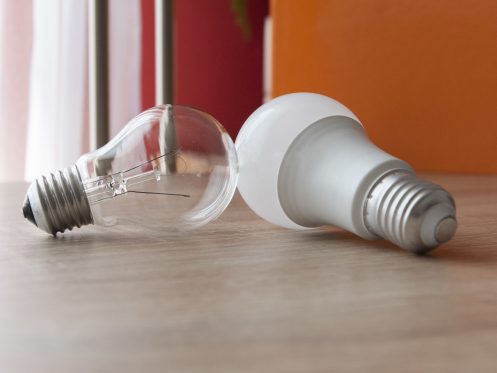Having an energy-efficient lighting system goes beyond brightening your home. It affects your finances and the environment. Reducing lighting energy consumption can reduce energy bills. With the following tips, you can contribute to a greener lifestyle. You will also ensure that every watt of energy your lighting fixture uses is translated to a well-lit home and financial savings.
LED Bulbs
LED lights are highly energy efficient. They convert 90% of the energy into light. Compared to incandescent lights, LEDs achieve the same luminosity with less energy consumption. They reach full brightness when turned on and don’t take time to warm up. When warming up, traditional bulbs consume energy that is not used to illuminate. The immediate illumination of LEDs contributes to energy saving. LEDs can last more than 50,000 hours. This longevity means fewer replacements and saving money.
Compact Fluorescent Lamps (CFLs)
CLFs pass an electric current through a tube containing argon and a small amount of mercury vapor. An ultraviolet light is produced, and the coating inside the tube emits visible light. This process makes CLFs use 70-80% less energy than incandescent bulbs to produce the same light. They are more durable than traditional bulbs. Although they have higher upfront costs, their energy efficiency, longer lifespan and lower operational costs can help you save money in the long run.
Dimmer Switches
Dimmer switches allow you to adjust the brightness of your lighting fixtures for enhanced room ambiance. When the lights are dimmed, less electricity is consumed. This will also extend the lifespan of your bulb as it experiences less wear and tear when operating at lower brightness levels. Investing in a high-quality dimming system can reduce your energy consumption by up to 65%. You can use them to replace your light switches.
Motion Sensors and Timers
Smart lighting technologies offer cost-effective ways of reducing unnecessary energy consumption. Motion sensors detect movement within a room and automatically turn on the lights. When the room is unoccupied, they turn them off. Timers allow users to schedule specific periods for lighting operation. The light will be on during the designated hours. Both technologies address the forgetfulness of turning off lights and help reduce energy loss.
Natural Light Integration
As a homeowner, you can maximize the use of sunlight to help reduce reliance on artificial energy. You can have well-designed windows or skylights to reduce artificial lighting during the day. Open the curtains and drapes to allow light. The strategic placement of reflective surfaces can enhance the distribution of natural light in the room. Natural light contributes to a more inviting and comfortable home.
Proper Light Color Temperature
Different color temperatures are suitable for various purposes. Opting for warmer tone (soft white or warm white) bulbs create a good ambiance, making them ideal for general household lighting. Cooler tone (cool white) bulbs are well-suited for spaces requiring clear visibility, such as offices. Assessing a bulb’s color rendering index (CRI) is crucial, as it indicates how accurately the bulb will illuminate chosen colors. By aligning a color temperature with the function of each space, you can use lighting more efficiently. This will reduce the need for excessive brightness.
Even if two bulbs have the same color temperature, the one with a higher CRI will show colors better. Look for the CRI value on the bulb’s packaging, typically presented alongside the lumen value. A CRI of 80 or higher is suitable for most everyday household tasks.
Energy Star Certified Fixtures
An energy star label on a lighting fixture shows it has undergone texting and shown high efficiency. They can consume less energy while providing optimal illumination. Star-certified fixtures can help reduce electricity bills and usually come with longer lifespans and warranties. This can lead to additional long-term savings.
Regular Maintenance
Dust and dirt accumulation on light fixtures can diminish the amount of light emitted. Routine cleaning and replacement of damaged or inefficient bulbs ensures the lighting system operates at its optimal efficiency. Doing this not only enhances the overall quality of illumination but also prevents the unnecessary consumption of additional energy that may be required to compensate for reduced brightness.
Due to the risks involved with electrical work, homeowners should seek professional electricians for all electrical issues. At GVEC Electrician Services, we provide electrical services to South Central Texas and the surrounding areas. We provide services for homes or small businesses such as indoor lighting installation, whole house surge protectors, wiring, and electrical panel or general electrical upgrades. Contact GVEC Electrician Services today; we are experts you can trust.



